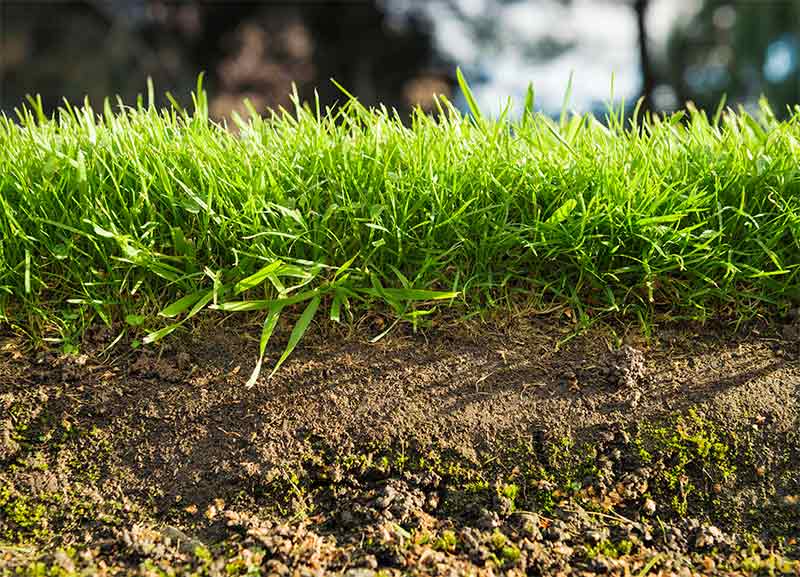What You Need To Know
When laying a lawn, it is important to first consider what your intended purpose for the lawn is. Is it intended as an area for recreation or relaxation, or as a practical solution for drainage and erosion control? The purpose of the lawn will determine what features you should include in your design and which materials you should use.
For recreational purposes, consider incorporating features such as a pathway, seating area, or water feature. Areas like these can add visual interest and provide additional enjoyment of the space. If your main goal is to control drainage and erosion, select materials that are effective at slowing runoff and preventing soil from washing away. The type of grass you use for the lawn will also be important; for recreational areas a denser grass such as Kentucky bluegrass may be best, and for areas intended to control drainage a grass such as Turf-type tall fescue is recommended.
Once the purpose of your lawn is determined, it’s time to think about design elements. Consider adding curves or other shapes into the layout of your lawn for visual interest, as well as incorporating edging and landscaping features. Doing so will enhance the look of your lawn while also helping to keep it in place by preventing soil from washing away or becoming compacted.
Need professional help to create a new lawn?
What Is The Lawn Going To Be Used For?
When creating a new lawn, it is important to consider what the lawn will be used for. How often will you use the lawn? What activities do you plan on doing on your lawn? Knowing how you plan on using your lawn can help you make decisions about what kind of grass or plants to select when designing the layout of your space.
For example, if you plan to use your lawn for outdoor recreational activities or sports, you may want to select a grass that is low-maintenance and hardy enough to handle regular play. On the other hand, if you are looking for a more decorative lawn with lots of flower beds and shrubs, you may want to select plants that are better suited for these purposes. No matter what your purpose is for the lawn, it’s important to remember that creating a beautiful and welcoming outdoor space can add value to your property. Taking the time to consider all aspects of how you plan on using your lawn will help ensure it is designed in such a way that it meets your needs and expectations.
Additionally, if you are unsure of what kind of lawn design would best fit your needs, it is always a good idea to consult with a professional landscaper or horticulturist who can provide advice and insight on the best way to create the perfect outdoor space. With their help, you can ensure that your new lawn will be an asset to your property for years to come!
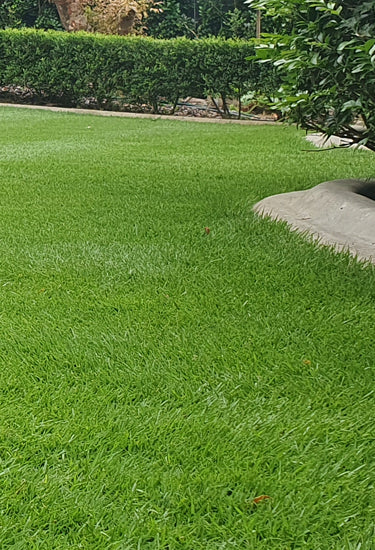
Take A Sample To Your Local Gardening Store For Testing
When it comes to creating a new lawn, one of the most important steps that should be taken is testing the soil. Knowing the composition of your existing soil will help you choose the right type of grass and determine what other amendments may need to be added in order to support healthy grass growth. You can easily take a sample from your garden or yard and bring it to your local gardening store for testing. They can tell you what type of soil and/or amendments you should use to ensure a lush and vibrant lawn. Additionally, they can also recommend specific grasses that would be best suited for the kind of soil in your area. Taking this step before beginning any landscaping projects is essential to having a successful lawn.
It’s also important to note that soil pH can vary from region to region. Because of this, it’s a good idea to have your soil tested regularly so you can be sure that the grass you’re growing is in an environment with the correct acidity level. Without testing your soil and adjusting it accordingly, your lawn may not thrive as much as it could. Taking a sample of your soil to a local gardening store for testing is an easy and essential step in the process of creating a new lawn.
Preparing The Soil For Planting
Creating a new lawn requires careful consideration of the environment in which you will be planting, as well as any additional steps that may need to be taken before planting. One key factor to consider when starting the process is preparing the soil for planting. This includes raking it over, removing any rocks or debris, and adding compost to ensure nutrients are available for the grass seeds.
Raking over the soil will help break up any clumps that are present, giving the grass a better chance to take root and grow. Removing rocks or debris from the soil will also help make sure the grass is able to spread out evenly without any obstructions in its way. Lastly, adding compost to your lawn is an incredibly important step as this will provide the grass with essential nutrients and minerals it needs to grow and thrive.
By taking the time to properly prepare the soil before planting, you’ll ensure that your new lawn is given every opportunity to take root and flourish for years to come. Additionally, preparing the soil in this way can help make sure that weeds have a harder time growing in their place. With careful consideration and preparation, you’ll be able to give your new lawn the best chance of success!
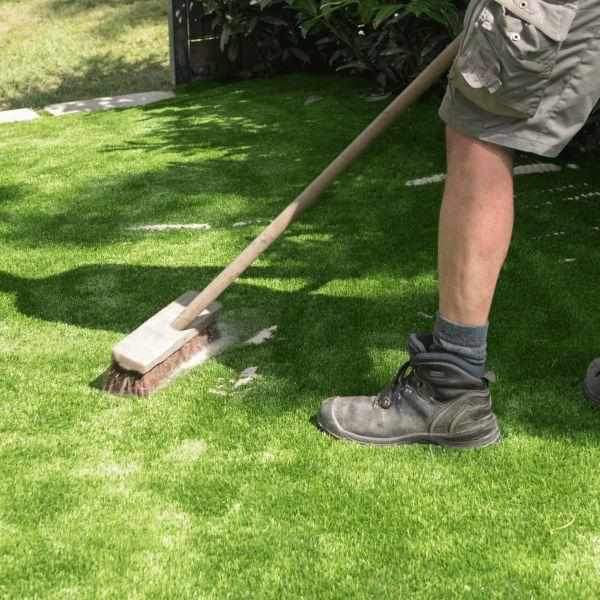
Which Type Of Grass Seed Should You Use?
When creating a new lawn, one of the most important considerations is choosing the right type of grass seed. Different types of grass have different characteristics that make them better suited for certain environments and uses. By understanding these features, you can select the best type of grass to meet your needs and create a lush, healthy lawn.
To start, consider the environment where you will be planting the grass. Do you live in a dry, hot climate or an area that experiences cold winters? These conditions can make a big difference when it comes to selecting the best type of grass seed. If you live in an area with hotter temperatures, then warm-season grasses such as Bermuda and Zoysia are some of the best choices. These types of grasses are more drought-tolerant and require less maintenance than cool-season grasses such as Rye and Fescue, which do better in cooler climates.
In addition to climate conditions, it’s also important to consider your intended use for the lawn. If you plan on using the lawn for activities like sports or playing with pets, then a grass like Rye or Fescue is best. These turf types are very durable and can withstand large amounts of foot traffic. On the other hand, if you’re looking for a lawn that looks beautiful without much maintenance, then consider warm-season grasses such as Bermuda or Zoysia. These grasses create an attractive lawn without needing to be mowed as often or fertilized regularly.
Adding Organic Matter
Adding organic matter to a new lawn is essential for establishing a lush, healthy and vibrant turf. Organic matter helps retain moisture in the soil, which promotes root growth and prevents compaction. It also provides food and nutrients to beneficial microorganisms that help keep the soil balanced. Organic matter can be added to existing lawns as well, but the benefits are greater when it is done while planting new grass seed. For this reason, adding organic matter to a newly established lawn is recommended.
Organic matter can be added in several ways. One of the most common methods is by composting yard waste such as leaves, grass clippings and weeds. Composted material should be spread out evenly over the soil before seeding and then tilled into the topsoil. Other organic matter sources include manure, peat moss and bark mulch. Organic matter is an important part of creating a healthy lawn, so be sure to add some when establishing a new one. With proper care, your lawn will be the envy of the neighborhood for years to come!
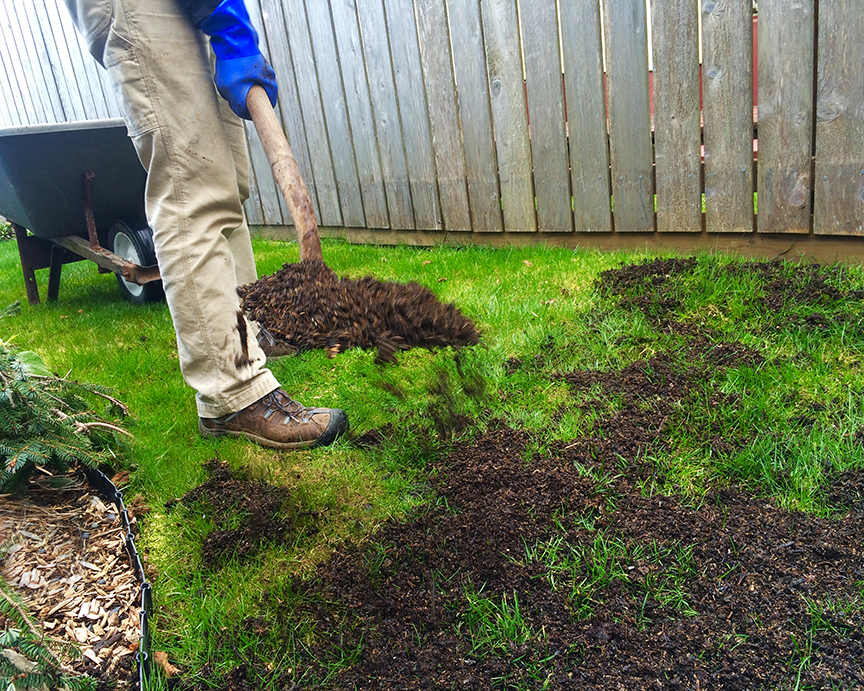
Mow Your Lawn At Least Once A Week During Peak Season And Fertilize Regularly To Keep Your Lawn Looking Lush And Green
You’ve just moved into a new house and are looking for ways to spruce up your lawn. Mowing once a week during the peak season, and fertilizing regularly is one of the most important steps you can take to keep your lawn healthy and green.
Mowing your lawn on a regular schedule not only keeps it looking neat and tidy, but also helps to maintain the health of your grass. By mowing frequently, you’ll be able to remove weeds and overgrown blades of grass before they have time to take root and spread. In addition, regular mowing allows more sunlight to reach the roots of your grass, which improves its overall health. Another important part of lawn maintenance is fertilizing regularly. Fertilizer helps to promote healthy grass growth and keep your lawn looking lush and green. There are many different types of fertilizer available, so it’s important to choose the one that works best for you and your lawn’s needs.
Finally, don’t forget to water your lawn. This is especially important during periods of drought or hot temperatures when the soil is dry. Watering your lawn not only helps to keep it looking lush and green, but also helps to promote healthy growth.
How To Prepare The Ground For Sowing Wild Flower Seeds In An Existing Lawn
If you have an existing lawn, you may be wondering how to prepare the ground for sowing wildflower seeds. Planting wildflowers in a preexisting lawn can be a great way to bring more vibrant beauty and life into your landscape. But if done incorrectly, this could lead to years of extra work trying to keep the flowerbeds looking their best.
When preparing your lawn for sowing wildflower seeds is to understand the environment of your lawn. You should take into consideration how much sun and water it gets, what type of soil it has, and any other factors that may affect its growth. Once you have a good understanding of the conditions that exist within your lawn, you can begin to prepare the ground for sowing. The first step is to mow down the existing grass as close as possible. This will enable you to work more easily with the soil and create a good seedbed for planting wildflowers. After mowing, you can use either a rototiller or a spade fork to loosen up the soil and remove any debris. This will help create a more even surface that the wildflower seeds can easily attach to and take root. Once you have loosened up the soil, it is important to add some organic matter such as compost or manure to give your wildflowers the nutrients they need to grow healthy. Once you have added organic matter, mix it into the soil with a spade fork or rototiller.
Finally, you should use a rake to create an even surface that is ready for sowing your wildflower seeds. Make sure the soil is not too compacted and that there are no rocks or other debris in the way. Once you have finished raking the surface, it is time to sow your wildflower seeds!
Add A Few Pieces Of Outdoor Furniture Or Potted Plants To Create A Cozy Atmosphere In Your Garden
If you’re looking for a way to make your garden feel more inviting and cozy, consider adding a few pieces of outdoor furniture or some potted plants. Outdoor furniture like chairs and tables can help create an inviting atmosphere where family and friends can gather for meals or just to relax. You can also add potted plants of various sizes to bring in color and life into your garden. This can help create a beautiful visual effect that will be sure to draw the eye of anyone who visits. Adding outdoor furniture and potted plants is an easy way to make your lawn look inviting and welcoming.
After selecting the style of furniture and plants you would like to include in your lawn, it’s important to make sure they are properly placed. When choosing where to place them, be sure to take into consideration factors such as how much sun they will receive, their exposure to potential pests or animals, as well as their overall function in the space. Additionally, be sure to give each piece its own dedicated space to prevent overcrowding. This will help ensure that your lawn looks neat and tidy while providing plenty of room for everyone to enjoy. Of course, adding these pieces of furniture or plants isn’t the only thing you should consider when creating a new lawn. Depending on the type of lawn you want to create, there are many other considerations that need to be taken into account. For instance, if you’re looking to create a more formal garden look, then you may want to include edging or pathways in your design. You should also take into consideration the size and shape of your lawn when planning out any features that you would like to include.
With a few pieces of outdoor furniture or some potted plants, you can easily take your garden from dull to delightful. So why not give it a try and see how much of an impact it can make on your lawn? With the right pieces in place, you’ll be sure to create an inviting atmosphere that will draw people in. By considering all these factors when creating a new lawn, you will be sure to have a beautiful space that both you and your visitors can enjoy.
New Lawn Aftercare
A green and healthy lawn requires regular care. Proper new lawn aftercare ensures that your turf will stay lush and vibrant for years to come. After you’ve invested time and money into installing a new lawn, it’s important to set aside some additional resources for maintenance. New lawn aftercare is an essential part of creating a lasting, beautiful lawn.
First and foremost, it’s important to maintain your new lawn’s soil structure. Properly aerating the soil helps grass roots grow deeply into the ground for better water absorption and nutrient uptake. This also improves air circulation in the soil and prevents compaction. Additionally, make sure to fertilize the turf using an appropriate, slow-release fertilizer. This will help the lawn stay healthy by providing essential nutrients to the grass and soil over extended periods of time.
Watering is another important step in new lawn aftercare. Not only does it keep your turf looking green and lush – it also helps promote deep root growth for better drought resistance. However, be sure not to overwater the lawn, as this can lead to issues such as disease and pests. Finally, mowing is a crucial element of new lawn aftercare. Making sure to keep your grass at the recommended height helps protect it against heat stress and weeds. Additionally, regularly mowing will encourage green growth in the turf by removing any dead or damaged blades.
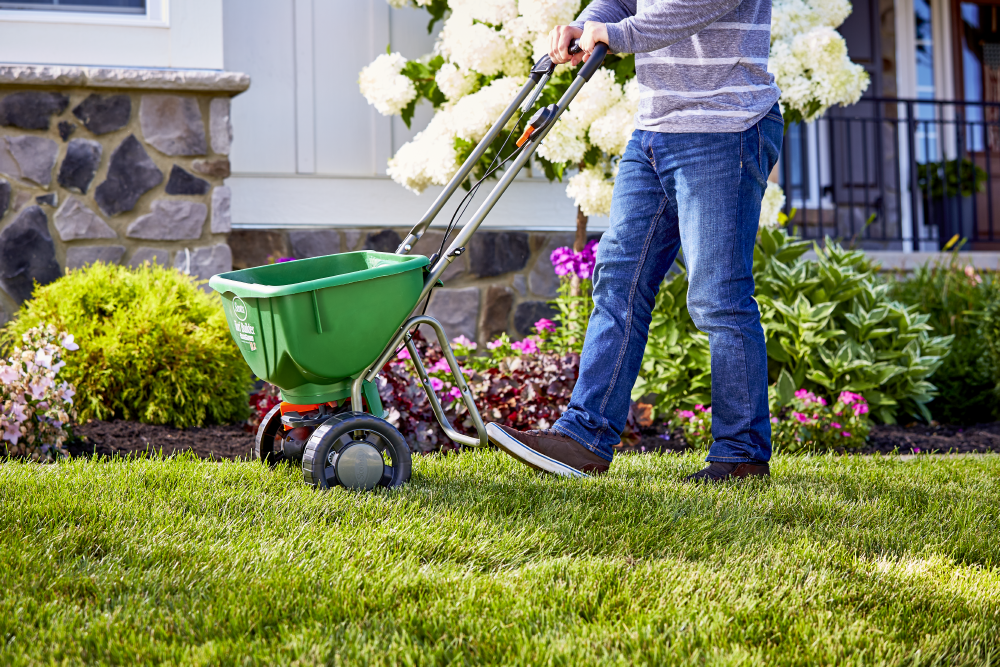
Frequently Asked Questions
How much space do I need for my new lawn?
The amount of space you’ll need for your new lawn depends on the type of grass you’re planting and how big you want the finished product to be. Generally, cool-season grasses will require about two pounds of seed per 1,000 square feet. Warm-season grasses will require even more seed.
What type of soil should I use?
The best soil for your new lawn will depend on the type of grass you’re planting. If you’re planting cool-season grass, aim for soil that is rich in organic matter and drains well. For warm-season grasses, you’ll want to look for soil with more clay content to help retain moisture.
How much fertilizer do I need?
The amount of fertilizer needed will depend on the type of grass you’re planting. Generally, cool-season grasses will need more fertilizer in the spring and fall. Warm-season grasses will require more fertilizer in the summer months. It is best to follow the instructions on the package of fertilizer to ensure you are using the right amount for your lawn.
How much water do I need to give my new lawn?
The amount of water you need to give your new lawn will depend on the type of grass you’re planting and the climate in which it is growing. Generally, cool-season grasses need 1 to 1.5 inches of water per week during periods of active growth. Warm-season grasses may require more depending on your climate. It is best to check with your local nursery or lawn care professional for specific watering requirements.
When should I mow my new lawn?
Mowing your new lawn on a regular basis is key to maintaining its health and appearance. When you first establish your lawn, it’s important to wait until the grass reaches at least three inches in height before mowing. After that, you should mow once a week or every other week depending on the type of grass and how fast it is growing.
What kind of weed control should I use?
The type of weed control you use will depend on the type of grass you’re planting. Generally, pre-emergent herbicides are best for controlling most weeds in cool-season grasses, while post-emergent herbicides are better suited for warm-season grasses. It is also important to check with your local nursery or lawn care professional for recommendations on specific weed control products that may be better suited for your climate and type of grass.
What should I do to control insects in my new lawn?
Insects can damage your lawn, so it’s important to use an insecticide regularly to control them. The type of insecticide you use will depend on the type of insects you’re dealing with. Generally, broad-spectrum insecticides are best for controlling a variety of insects, while specific products may be better suited for certain pests. It is important to follow the instructions on the package and consult with an expert if needed.
How do I aerate my new lawn?
Aerating your lawn helps promote healthy growth and prevent compaction. Generally, you will want to aerate your lawn once a year in the spring or fall. The best way to aerate is to use a core aerator machine that removes small cores of soil from the surface of your lawn. It is important to follow the manufacturer’s instructions for operation and safety.
How do I dethatch my new lawn?
Dethatching is the process of removing layers of dead grass and debris from the surface of your lawn. Generally, you will want to dethatch your lawn once a year in the spring or fall. The best way to do this is by using a dethatching machine or rake that can remove the dead material without damaging healthy turf. It is important to follow the manufacturer’s instructions for operation and safety.

